Individual development plan examples: How to craft a roadmap to success

Empower, Engage & Succeed with the Complete Employee Engagement Software

Navigating the intricate landscape of personal and professional growth, an individual development plan template (IDP) emerges as a strategic compass for individuals across various industries.
This comprehensive guide unveils the essence of individual development plan, transcending industries, by delving into their significance, crafting personalized examples, and illuminating their impact.
From hospitality to engineering, this guide offers a roadmap for individuals to chart their unique journeys toward mastery, a leadership position, and fulfillment. With a wealth of examples tailored to different sectors, this guide unlocks the door to transformative growth and success.
What is an individual development plan?
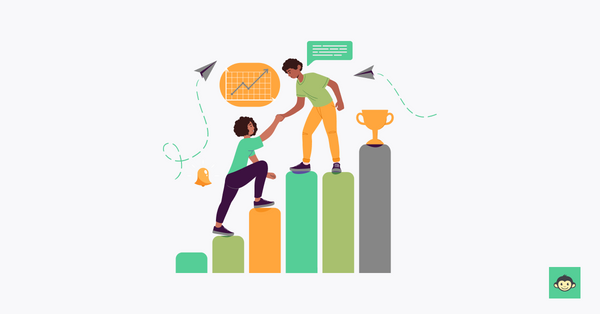
An Individual Development Plan (IDP) is a comprehensive document that outlines an individual's professional goals, strengths, areas for improvement, and the strategies they will undertake to achieve career growth and skill enhancement.
It serves as a roadmap for personal and professional development, helping individuals align their aspirations with the organization's goals. IDPs typically include a self-assessment, a list of short-term and long-term goals, action steps, timelines, resources required, and methods for tracking progress.
These plans are often created collaboratively between employees and their managers, ensuring that both parties are invested in the individual's growth journey. IDPs are essential tools for fostering continuous learning, skill development, and career advancement within the organization.
Benefits of creating an individual development plan

Creating an individual development plan (IDP) offers a range of benefits that contribute to an individual's personal and professional growth, as well as the overall success of the organization. These benefits include:
- Clear goals and direction: An IDP helps individuals define clear goals and objectives, providing a roadmap for their career and personal development journey.
- Focused skill development: IDPs identify areas for improvement, enabling individuals to focus on developing specific skills and competencies.
- Alignment with organizational goals: When IDPs are aligned with organizational objectives, employees' growth contributes to the company's success, fostering a win-win scenario.
- Enhanced performance: As individuals develop skills and knowledge, their performance improves, leading to increased productivity and contributions to the organization.
- Increased motivation: Setting and achieving goals outlined in an IDP boosts individuals' motivation, job satisfaction, and overall engagement.
- Support for learning: IDPs encourage continuous learning and self-directed development, empowering individuals to seek out relevant training and education.
- Effective career planning: IDPs provide a structured approach to career advancement, helping employees envision their desired career trajectory and plan accordingly.
- Structured feedback: Regularly reviewing and updating IDPs facilitates ongoing conversations between employees and managers, fostering open communication.
- Talent retention: Organizations that invest in employees' growth through IDPs are more likely to retain top talent, reducing turnover rates.
- Succession planning: IDPs identify potential future leaders, aiding succession planning by grooming employees for higher responsibilities.
- Personal fulfillment: Accomplishing goals outlined in an IDP goals contribute to personal fulfillment, as individuals see tangible progress in their development.
- Customized development: IDPs are tailored to each individual's strengths, aspirations, and learning styles, promoting personalized growth strategies.
- Organizational agility: Employees with diverse skills acquired through IDPs contribute to an agile organization prepared for dynamic challenges.
- Better resource allocation: By understanding employees' development needs through IDPs, organizations can allocate resources more effectively to areas where they will have the most impact.
- Enhanced team collaboration: As individuals develop a broader skill set and a deeper understanding of their roles, team collaboration and efficiency are improved.
- Employee empowerment: IDPs empower employees to take charge of their own development, fostering a sense of ownership and accountability for their growth.
- Improved work-life balance: IDPs can help individuals set realistic and balanced goals, leading to better management of work and personal life commitments.
Individual development plans offer a structured and strategic approach to personal and professional growth. They empower individuals to take ownership of their development while benefiting the organization by fostering a skilled, motivated, and engaged workforce.
What are the 5 areas of a personal development plan?

A comprehensive personal development plan encompasses various areas that contribute to an individual's holistic growth. While the specific areas may vary based on individual goals and circumstances, the following five key areas are commonly addressed in a personal development plan:
Professional skills
This area focuses on enhancing job-specific skills and competencies required for current and future roles. It includes technical expertise, industry knowledge, and certifications. These skills form the foundation on which your career growth stands, ensuring you remain not just relevant but indispensable in your field.
Personal skills
Personal skills encompass soft skills like communication, time management, problem-solving, and adaptability, which are crucial for effective interpersonal interactions and career success. These skills are the adhesive that holds your career together, fostering meaningful connections and paving the way for lasting success.
Leadership and management skills
Developing leadership qualities, such as decision-making, team management, and strategic thinking, prepares individuals for leadership roles and fosters their ability to guide others. Strategic thinking elevates your ability to see the bigger picture and plan for the long term. These skills not only prepare you for leadership roles but also shape you into a mentor and guide for your peers, propelling your career to new heights.
Personal well-being
This area emphasizes physical, mental, and emotional well-being. It includes practices like exercise, stress management, mindfulness, and maintaining a healthy work-life balance. Well-being isn't just a checkbox on your development plan; it's the fuel that keeps your career engine running smoothly, enabling you to thrive in all aspects of life.
Career development
This aspect involves setting clear career goals, identifying growth opportunities, networking, and planning steps to advance in one's chosen career path. This aspect of your personal development plan is your roadmap to success, ensuring you not only reach your desired career destination but also excel beyond your own expectations.
These areas collectively ensure a balanced approach to personal development, nurturing a well-rounded individual capable of excelling both professionally and personally.
What are the 6 components of personal development plan?
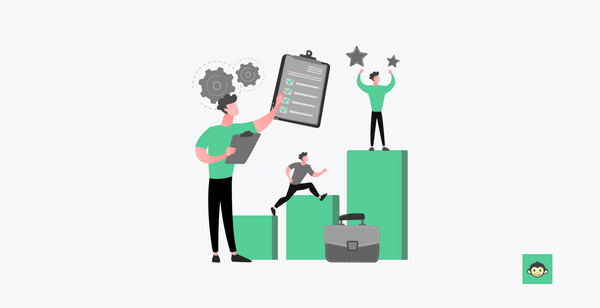
A well-structured personal development plan (PDP) is like a roadmap to self-improvement and success. To craft an effective PDP, you need to consider six key components:
- Clear goals: Start by defining your objectives. What do you want to achieve personally and professionally? Your goals should be specific, measurable, achievable, relevant, and time-bound (SMART). Clarity here is crucial; it's your destination on the map.
- Self-assessment: Take a good, honest look at yourself. What are your strengths and weaknesses? What skills or knowledge do you lack? Self-awareness is the compass that helps you navigate your development journey.
- Actionable plans: Once you know your goals and where you stand, outline the steps you need to take. Break down your goals into smaller, manageable tasks. These are the roads you'll travel to reach your destination.
- Resources: Identify the resources you'll need. This could include books, courses, workshops, mentors, or online tools. Resources are like the fuel that powers your journey; make sure you have enough to reach your goals.
- Timelines: Assign realistic timelines to your goals and action steps. A timeline acts as your schedule, ensuring you're on track and not wandering aimlessly.
- Monitoring and evaluation: Regularly review your progress. Are you moving in the right direction? Are you achieving your milestones? Adjust your plan as needed; it's like recalculating your route when you encounter roadblocks.
Individual development plan examples for managers

Individual development plans for managers are essential tools for nurturing leadership potential and ensuring that they continue to excel in their roles. Here are some tailored examples to guide managers on their development journey:
Enhancing leadership skills
A key goal for managers is to strengthen their leadership abilities. This might involve attending leadership workshops, seeking executive coaching, or participating in leadership development programs. The aim is to become an inspirational and effective leader who can guide and motivate their teams to success.
Strategic thinking
For managers responsible for decision-making and long-term planning, developing strategic thinking skills is paramount. They can achieve this by engaging in strategic planning sessions, collaborating with senior leadership, and studying industry trends to make informed decisions that drive the organization forward.
Team building and management
Fostering a high-performing team is a critical aspect of a manager's role. Managers can work on their team-building skills by attending team-building workshops, learning about effective communication, and studying team dynamics to create a cohesive and productive workforce.
Conflict resolution
Handling conflicts within a team is another important managerial skill. Managers can focus on conflict resolution through conflict management training, mediating disputes, and learning techniques to foster healthy workplace relationships.
Time management
Managers often juggle numerous responsibilities. Improving time management skills can help them become more efficient and effective. This can involve time management courses, using productivity tools, and setting clear priorities to meet deadlines and achieve goals.
Mentoring and coaching
Managers can develop their mentoring and coaching abilities by actively mentoring junior staff, providing constructive feedback, and staying updated on coaching techniques. This helps them nurture the growth of their team members.
Stakeholder engagement
Building strong relationships with stakeholders, both internal and external, is vital. Managers can enhance their stakeholder engagement skills by networking, attending industry conferences, and developing strategies for effective stakeholder communication.
Emotional intelligence
Developing emotional intelligence is crucial for managers to effectively lead their teams. This includes understanding and managing their own emotions, as well as empathizing with their team members. Managers can enhance this skill through emotional intelligence workshops, reading relevant literature, and practicing mindfulness techniques.
Innovation and creativity
Encouraging innovation and creativity within the team can lead to significant improvements and competitive advantages. Managers can foster these skills by participating in innovation workshops, learning about creative problem-solving techniques, and creating an environment that supports new ideas and experimentation.
Individual development plan examples for employees
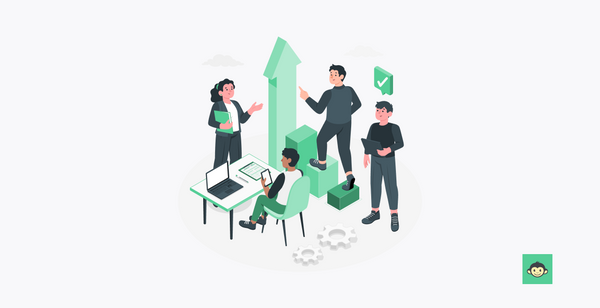
Here are some practical examples to inspire and guide employees on their development journey:
Technical skill enhancement
Employees can focus on improving their technical skills relevant to their roles. This might involve attending specialized training sessions, enrolling in online courses, or seeking certification in specific software or tools. By becoming experts in their fields, they contribute more effectively to their teams and the organization.
Leadership aspirations
For employees aspiring to leadership roles, IDPs can include leadership development activities. They can participate in leadership workshops, join cross-functional projects to gain management experience, or take on mentorship roles to build their leadership skills.
Communication and presentation skills
Effective communication is essential in any job. Employees can work on their communication and presentation skills through courses, public speaking opportunities, or even joining a Toastmasters club. Strong communication skills enhance their ability to convey ideas and collaborate with others.
Time management and productivity
Many employees struggle with managing their time efficiently. An IDP can include time management training, using productivity apps, or learning organization techniques. Improved time management leads to increased productivity and reduced stress.
Project management mastery
Employees involved in project-based roles can focus on project management skills. They can attend project management courses, become certified in project management methodologies, and practice project planning and execution.
Cross-functional knowledge
Encouraging employees to broaden their understanding of other departments can be beneficial. This can involve cross-functional training, attending meetings in different departments, or collaborating on projects outside their usual scope.
Networking and relationship-building
Building a professional network is vital for career growth. Employees can set goals to attend industry events, join professional associations, and engage in networking opportunities. Strong professional relationships can open doors to new opportunities.
Work-life balance
Achieving a healthy work-life balance is crucial for employee well-being. IDPs can include actions such as setting boundaries, time management for personal life, and practicing self-care to ensure employees maintain a balance that prevents burnout.
Diversity and inclusion
In today's diverse workplaces, understanding and promoting diversity and inclusion is vital. Employees can seek out diversity training, participate in inclusion initiatives, and actively contribute to a more inclusive work environment.
How do you write an individual development plan for your employees?
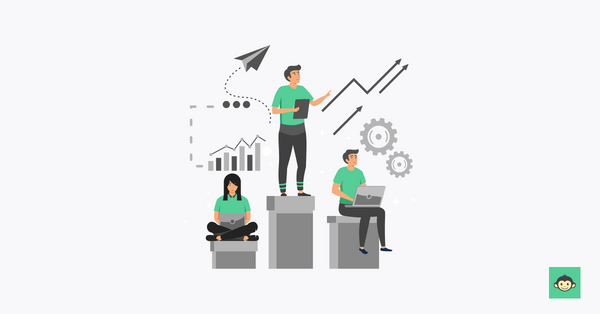
Writing an effective individual development plan (IDP) for your employees involves a structured and collaborative approach. Follow these steps to create a well-crafted IDP:
- Identify development areas: Based on the employee's self-assessment and feedback from managers and peers, pinpoint the specific skills, knowledge, and competencies to be developed.
- Outline action steps: Break down each goal into actionable steps or tasks that will lead to its achievement. These steps should be specific, tangible, and sequential.
- Allocate resources: Determine the resources required for development, such as training programs, workshops, courses, mentoring, or job rotations.
- Create a development plan: Summarize the goals, action steps, resources, and timelines in a structured document. Use a format that's easy to understand and refer back to.
- Identify support: Specify who will provide support or mentorship during the development process. This could include managers, colleagues, or external mentors.
- Measure and evaluate: Regularly assess the employee's progress and the impact of the development plan on their performance and growth.
- Celebrate achievements:Celebrate milestones and achievements to keep the employee motivated and reinforce the value of their efforts.
- Adaptability: Be open to adjusting the plan based on changing circumstances, new opportunities, or evolving goals.
- Encourage self-reflection: Encourage employees to reflect on their learning journey, noting what worked well, the challenges faced, and how they've grown.
- Document growth: Maintain records of completed training, achieved milestones, and new skills acquired, which can be valuable for performance evaluations and career discussions.
- Continual improvement:Use the feedback from the employee and their experiences to improve the IDP process for future iterations.
Remember, an effective IDP should be flexible, adaptive, and supportive of the employee's growth journey within the organization.
Why implementing an individual plan is both a manager's and HRs responsibility?
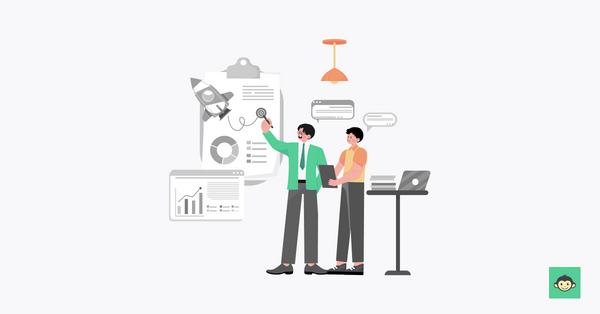
Implementing an individual development plan (IDP) is a shared responsibility between managers and the HR department due to its comprehensive impact on employee growth and organizational success. Here's why both parties play crucial roles in this process:
Manager's Responsibility:
Direct supervision
Managers have direct insight into their team members' strengths, weaknesses, and performance. This knowledge helps tailor IDPs to individual needs.
Goal alignment
Managers align IDPs with the organization's goals and the team's objectives, ensuring that employees' development contributes to the team's success.
Guidance and support
Managers provide guidance on setting realistic goals, suggest suitable development opportunities, and offer feedback as employees progress.
Feedback
They offer constructive feedback to employees, helping them understand areas for improvement and offering insights for skill enhancement.
Accountability
Managers monitor employees' progress, ensuring that action steps are being followed and milestones are achieved as outlined in the IDP.
Motivation
Managers recognize and celebrate employees' achievements and growth, motivating them to continue their development journey.
Individualized coaching
Managers take on the role of coaches, providing one-on-one support tailored to each employee's needs. This involves regular check-ins and personalized development plans that consider an employee's unique aspirations and challenges.
Identifying stretch opportunities
Managers actively seek out opportunities for employees to stretch their capabilities and take on challenging assignments. Encouraging employees to step out of their comfort zones fosters growth and resilience.
Skill transfer and knowledge sharing
Managers promote a culture of knowledge sharing within their teams. They encourage employees to share their expertise and mentor each other, creating a collaborative learning environment.
Succession planning
Managers play a pivotal role in succession planning. They identify high-potential employees, groom them for leadership roles, and ensure a smooth transition when vacancies arise.
HR's Responsibility:
Framework creation
HR establishes a structured framework for creating, tracking, and evaluating IDPs across the organization. This ensures consistency and fairness.
Resource provision
HR identifies and provides access to various development resources, including training programs, workshops, and mentoring opportunities.
Skill assessments
They facilitate skills assessments and competency evaluations that inform the development areas to be included in IDPs.
Development opportunities
HR identifies potential growth opportunities within the organization, allowing employees to explore diverse career paths.
Employee alignment
HR ensures that IDPs align with the company's overall talent management strategy, fostering a cohesive approach to employee growth.
Measurement and reporting
They measure the impact of IDPs on employee performance and the organization's success, offering insights for improvement.
Continuous improvement
HR gathers feedback from both managers and employees to refine the IDP process, ensuring its effectiveness over time.
Legal compliance
Ensuring that IDPs comply with relevant labor laws and regulations is a vital HR responsibility. They stay updated on legal requirements and ensure that IDPs don't inadvertently violate any employment laws.
Diversity and inclusion
HR takes a proactive role in promoting diversity and inclusion within IDPs. They work to ensure that development opportunities are equitable and accessible to employees from diverse backgrounds, fostering a more inclusive workplace culture.
Data security
As IDPs often contain sensitive employee information, HR is responsible for maintaining data security. They implement measures to protect employee privacy and data integrity, ensuring that confidential information remains confidential.
Technology integration
HR leverages technology to streamline the IDP process, making it more efficient and user-friendly. They ensure that digital tools for creating, tracking, and reporting on IDPs are integrated seamlessly into the organization's HR systems.
Collaboration between managers and HR is essential for successful IDP implementation. While managers provide personalized guidance and support, HR ensures a structured framework and availability of resources. This joint effort fosters a culture of development, engagement, and continuous improvement, benefiting both employees and the organization as a whole.
How to set goals for your individual development plan?
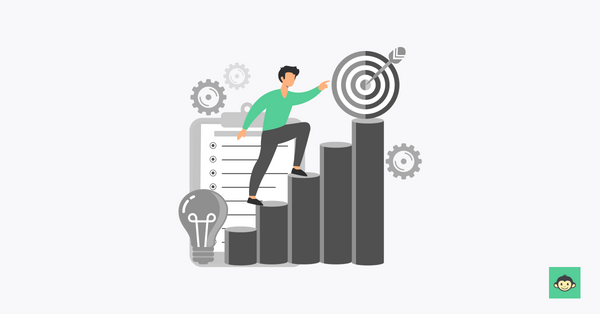
Setting goals for your individual development plan (IDP) involves a strategic and thoughtful approach. Follow these steps to establish effective and achievable goals:
- Self-assessment: Reflect on your current skills, strengths, weaknesses, and areas for improvement. Consider feedback from colleagues, managers, and any previous performance evaluations.
- Define clear objectives: Clearly define what you want to achieve through your IDP. Your goals should be specific, measurable, achievable, relevant, and time-bound (SMART).
- Prioritize: Determine which skills or areas need immediate attention and which ones can be developed over a longer period. Focus on a manageable number of goals to avoid overwhelm.
- Quantify measurable goals:Use metrics or criteria to measure progress. For example, if your goal is to improve public speaking, set a target number of presentations to give within a certain timeframe.
- Research and resources: Identify the resources needed to achieve each goal. This could include workshops, courses, books, mentors, or online resources.
- Flexibility: Keep your goals flexible. Circumstances change, and you may need to adjust your goals based on new opportunities or challenges.
- Balance: Ensure a balanced mix of short-term and long-term goals, as well as goals that focus on both professional and personal development.
- Feedback: Seek input from your manager, colleagues, or mentors when setting goals. They can provide valuable insights and help refine your objectives.
- Regular review: Regularly review and update your goals. This helps track progress, make adjustments as needed, and stay aligned with your evolving aspirations.
- Celebrate milestones: Acknowledge and celebrate your achievements along the way. Recognizing progress boosts motivation and keeps you engaged in the development process.
- Leverage SWOT analysis: Conduct a SWOT (Strengths, Weaknesses, Opportunities, Threats) analysis to gain deeper insights into your personal and professional landscape.
- Set long-term vision: While focusing on immediate goals, also establish a long-term vision for your personal development. Having a clear destination in mind can guide your short-term objectives and provide a sense of purpose.
- Incorporate learning styles: Consider your preferred learning style (visual, auditory, kinesthetic) when planning your development.
- Embrace adaptability: Embrace adaptability as a goal itself. The ability to adapt to new technologies, industries, or job roles is a valuable skill in today's rapidly changing world.
- Networking and collaboration: Include goals related to expanding your professional network and collaboration skills.
How to implement development plans?

Implementing professional and personal development plans in the workplace is crucial for fostering employee growth and achieving organizational goals. Here's a practical guide on how to make it happen:
- Needs assessment: Begin by identifying the specific development needs of your employees. Conduct regular performance reviews, gather feedback, and assess skills gaps. This will form the basis of your individual development planning.
- Set clear objectives: Once you've development identified the needs, set clear and measurable objectives. Ensure they align with the individual's career goals and the company's strategic objectives. These objectives should be SMART (Specific, Measurable, Achievable, Relevant, and Time-bound).
- Resource allocation: Allocate the necessary resources for development. This includes budgeting for training programs, workshops, mentoring, and access to relevant tools and technologies.
- Development activities: Encourage employees to engage in development activities. This may involve attending workshops, taking online courses, participating in cross-functional projects, or seeking mentorship from experienced colleagues.
- Regular feedback: Provide ongoing feedback and support. Regular check-ins with managers or mentors can help employees stay on track and make necessary adjustments to their development plans.
- Measure progress: Use key performance indicators (KPIs) to track progress. Monitor skill improvements, project outcomes, and the impact of development activities on individual and team performance.
- Recognition and rewards: Recognize and reward achievements along the way. Celebrate milestones and showcase success stories to motivate others and reinforce the importance of development.
How to craft individual development plan template for employees, managers, & senior leadership?
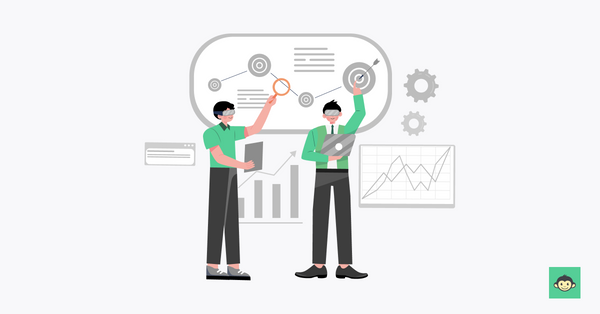
Crafting individual development plan (IDP) examples for employees, managers, and senior leadership requires a strategic approach that aligns with their unique responsibilities and career trajectories. Here's how to create effective IDP examples for this group:
- Needs assessment: Start by assessing the specific needs of managers and senior leaders. Consider their current roles, skills, and areas for growth.
- Alignment with organizational goals: Ensure that the IDP examples align with both the individual's career aspirations and the organization's strategic objectives.
- Leadership competencies: Focus on leadership competencies such as strategic thinking, decision-making, communication, and team development. Tailor goals to enhance these skills.
- 360-degree feedback:Gather feedback from colleagues, subordinates, and superiors to identify areas for improvement and strengths to leverage.
- Long-term vision: Help managers and senior leaders align their IDPs with long-term career visions, considering potential leadership roles and responsibilities.
- Executive coaching: Offer executive coaching or mentoring to support their development. Include goals related to improving coaching or mentoring skills if applicable.
- Change management: If their roles involve leading through change, incorporate goals related to change management strategies and techniques.
- Innovation and strategy: Focus on fostering innovation, creating strategic plans, and identifying opportunities for organizational growth.
- Cross-functional collaboration: Set goals that encourage collaboration across different departments or functions, enhancing their ability to lead multidisciplinary teams.
- Performance metrics: Quantify goals where possible. For example, increasing employee engagement scores or achieving specific revenue targets.
- Crisis management: Develop skills in crisis management and decision-making under pressure, considering their roles in guiding the organization during challenging times.
- Ethical leadership: Include goals related to promoting ethical conduct, fostering a positive organizational culture, and leading by example.
Remember, IDPs for managers and senior leaders should be forward-thinking, challenging them to expand their skill sets, embrace innovation, and navigate complex leadership scenarios.
Individual development plan examples for various industries
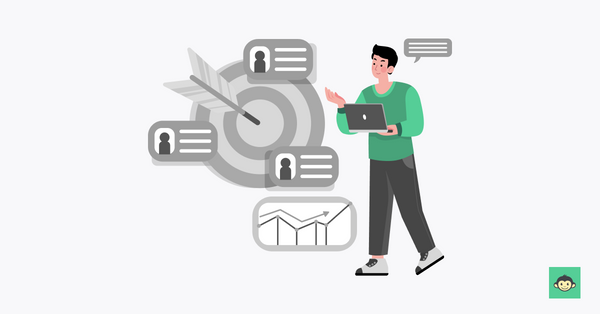
Explore diverse individual development plan (IDP) examples tailored to various industries. From tech to healthcare, these IDPs illustrate how professionals can enhance skills, achieve goals, and thrive in their specific fields.
Individual development plan examples for engineers
1. Technical skill advancement:
- Goal: Master [specific technology/tool] within [timeline].
- Action: Enroll in relevant courses, and apply skills to projects.
2. Leadership readiness:
- Goal: Develop leadership qualities.
- Action: Attend leadership workshops and mentor junior engineers.
3. Certification attainment:
- Goal: Obtain [industry certification].
- Action: Study, take preparation courses, and schedule exams.
4. Cross-functional exposure:
- Goal: Gain insight into [related domain].
- Action: Collaborate, attend cross-functional meetings.
5. Innovation contribution:
- Goal: Propose innovative solutions.
- Action: Engage in R&D projects, and submit patents.
Individual development plan examples for pharma employees
1. Regulatory compliance expertise:
- Goal: Master regulations like FDA guidelines within [timeline].
- Action: Attend regulatory workshops, analyze case studies, and contribute to compliance projects.
2. Clinical trial management:
- Goal: Develop proficiency in managing clinical trials.
- Action: Participate in trial coordination, learn data analysis tools, and collaborate with clinical teams.
3. Pharmacovigilance skills:
- Goal: Enhance adverse event reporting and monitoring capabilities.
- Action: Attend pharmacovigilance seminars, analyze real-world data, and contribute to safety assessments.
4. Cross-functional collaboration:
- Goal: Foster collaboration with R&D, production, and marketing teams.
- Action: Join cross-functional projects, engage in knowledge-sharing sessions, and attend inter-departmental meetings.
5. GMP and quality assurance:
- Goal: Become a quality assurance expert aligned with Good Manufacturing Practices (GMP).
- Action Steps: Attend GMP training, participate in quality audits, and contribute to process improvement initiatives.
Individual development plan examples for finance professionals
1. Financial modeling expertise:
- Goal: Enhance proficiency in financial modeling for more accurate forecasting.
- Action: Enroll in advanced Excel courses, practice modeling complex scenarios, and participate in case study workshops.
2. Strategic financial planning:
- Goal: Develop strategic planning skills to contribute to long-term financial strategies.
- Action: Attend strategic finance seminars, collaborate with strategy teams, and analyze industry trends for informed decision-making.
3. Certification attainment:
- Goal: Obtain [specific finance-related certification] to elevate professional credentials.
- Action: Study rigorously, attend certification review sessions, and schedule the exam within [timeline].
4. Risk management proficiency:
- Goal: Strengthen risk assessment skills to minimize financial vulnerabilities.
- Action: Attend risk management seminars, analyze historical data for risk patterns, and propose mitigation strategies.
5. Leadership in finance teams:
- Goal: Cultivate leadership qualities for effective management within the finance department.
- Action: Engage in leadership workshops, mentor junior team members, and initiate process improvement projects.
Individual development plan examples for supply chain employees
1. Supplier Relationship Management:
- Goal: Enhance supplier collaboration and negotiation skills.
- Action: Attend supplier management workshops, engage in cross-functional collaboration, and lead vendor evaluation projects.
2. Process Optimization:
- Goal: Streamline supply chain processes for efficiency.
- Action: Enroll in process improvement courses, map out current processes, and implement Lean principles.
3. Inventory Management Proficiency:
- Goal: Develop expertise in optimizing inventory levels.
- Action: Take advanced inventory management courses, analyze historical data, and implement demand forecasting techniques.
4. Global Supply Chain Understanding:
- Goal: Gain insights into global supply chain dynamics.
- Action: Participate in international trade seminars, collaborate with overseas teams, and understand regional regulations.
5. Supply Chain Analytics:
- Goal: Improve decision-making through data-driven insights.
- Action: Learn data analytics tools, work on supply chain data projects, and present findings to management.
Individual development plan examples for hospitality industry employees
1. Customer Service Excellence:
- Goal: Elevate customer satisfaction by mastering guest interactions and problem-solving.
- Action: Attend customer service workshops, role-play scenarios, and seek feedback from supervisors.
2. Multilingual Proficiency:
- Goal: Enhance guest experience by learning [specific language] to communicate with a diverse clientele.
- Action: Enroll in language classes, practice with colleagues, and interact with guests in the target language.
3. Upselling Skills:
- Goal: Boost revenue by becoming proficient in upselling techniques and personalized recommendations.
- Action: Attend upselling training, create upsell strategies, and track successful upsell transactions.
4. Leadership Readiness:
- Goal: Prepare for supervisory roles by developing leadership and team management skills.
- Action: Participate in leadership courses, mentor junior staff, and seek guidance from experienced managers.
5. Crisis Management:
- Goal: Enhance preparedness by training for effective crisis response and guest safety protocols.
- Action: Engage in crisis management drills, study emergency procedures, and participate in safety audits.
Individual development plan examples for healthcare professionals
1. Clinical skill enhancement:
- Goal: Improve proficiency in [specific clinical procedure or technology].
- Action: Attend relevant workshops, engage in hands-on practice, and seek mentorship from experienced colleagues.
2. Patient communication:
- Goal:Enhance patient communication and interpersonal skills.
- Action: Participate in communication skills training, role-play scenarios with peers, and gather feedback from patients.
3. Certification attainment:
- Goal: Obtain [specific healthcare certification].
- Action: Enroll in preparatory courses, study diligently, and schedule the certification exam within [timeline].
4. Research and evidence-based practice:
- Goal: Contribute to and apply evidence-based research in clinical practice.
- Action: Attend research seminars, participate in clinical studies, and review current literature.
5. Leadership development:
- Goal: Develop leadership capabilities for potential managerial roles.
- Action: Engage in leadership training, take on supervisory responsibilities, and seek mentorship from senior leaders.
Individual development plan examples for IT professionals
1. Programming skill advancement:
- Goal: Master [specific programming language or framework].
- Action: Take online courses, work on relevant projects, and participate in coding challenges.
2. Cybersecurity expertise:
- Goal: Enhance skills in cybersecurity to protect organizational data.
- Action: Enroll in cybersecurity courses, participate in threat simulations, and stay updated on security trends.
3. Cloud computing proficiency:
- Goal: Gain expertise in cloud computing platforms like AWS, Azure, or Google Cloud.
- Action: Attend cloud computing workshops, obtain certifications, and work on cloud-based projects.
4. Project management:
- Goal: Develop project management skills to lead IT projects effectively.
- Action: Take project management courses, earn a PMP certification, and manage small projects to gain experience.
5. Innovation and technology integration:
- Goal: Foster innovation and integrate new technologies into existing systems.
- Action: Participate in innovation workshops, stay current with emerging technologies, and pilot new solutions within the organization.
Role of an employee development program in implementing an individual development plan for your employees

An employee development program plays a pivotal role in successfully implementing individual development plans (IDPs). It provides a structured framework for employees to access resources, training, and opportunities aligned with their IDP goals. These programs offer tailored workshops, courses, and mentorship, fostering skill enhancement and career growth.
By aligning IDPs with the organization's development initiatives, employees receive the necessary support, ensuring their aspirations align with business objectives. Employee development programs create a culture of continuous learning, boosting engagement, job satisfaction, and overall organizational success.
In essence, an Individual Development Plan (IDP) serves as a personalized roadmap for growth, regardless of industry. With strategic goal-setting, tailored actions, and ongoing reflection, individuals can harness their potential, cultivating skills that enrich both their careers and their industries at large.
FAQs
What are some individual development plan examples for managers?
Managers often focus on leadership development, strategic thinking, and team management. For example, a manager's individual development plan may include goals like enhancing leadership skills through workshops, participating in strategic planning sessions, and mentoring junior team members to foster leadership qualities. These plans aim to prepare managers for broader responsibilities within the organization.
Can you provide individual development plan examples for employees in the workplace?
Certainly! Employees can have diverse development goals. For instance, an employee may aim to improve technical skills by enrolling in relevant courses, enhance communication abilities through public speaking training, or build leadership qualities by joining cross-functional projects. These plans align individual aspirations with organizational objectives, fostering a motivated and skilled workforce.
What are the common components of an individual development plan in a professional setting?
A typical individual development plan includes clear goals, self-assessment, actionable plans, resource identification, timelines, and monitoring and evaluation. These components help individuals define their objectives, assess their current skills, outline steps to achieve their goals, identify the necessary resources, set realistic timelines, and regularly review and adapt their plans.
How do I create a personal development plan for my career?
To create a personal development plan, start by self-reflecting on your strengths, weaknesses, and career aspirations. Set clear, SMART goals that align with your vision. Create actionable plans, identify resources, establish timelines, and regularly review your progress. Adapt your plan as needed to stay on track and achieve your career objectives. Seek guidance and feedback from mentors.
What are some real-life individual development plan samples for career growth?
Real-life individual development plan samples vary based on career goals. For instance, a sample for career or personal growth may include goals like obtaining relevant certifications, attending leadership training, and joining cross-functional projects. Another sample for skill enhancement may involve taking technical courses, seeking mentorship, and participating in industry conferences.
Kailash Ganesh
Kailash is a Product Marketer with 5+ years of experience. He loves story-telling in the simplest way possible and he is an avid reader, movie buff, and likes to travel new places to meet new people.
















